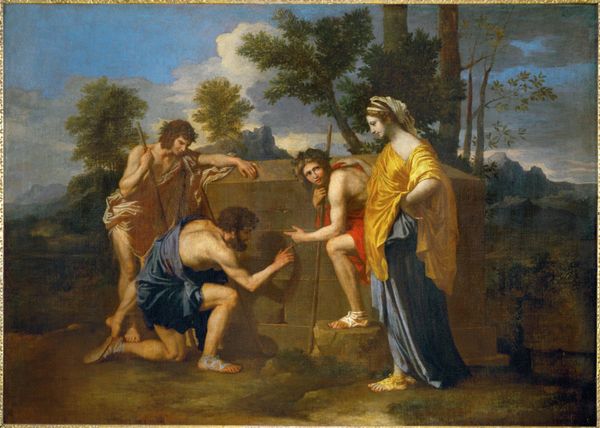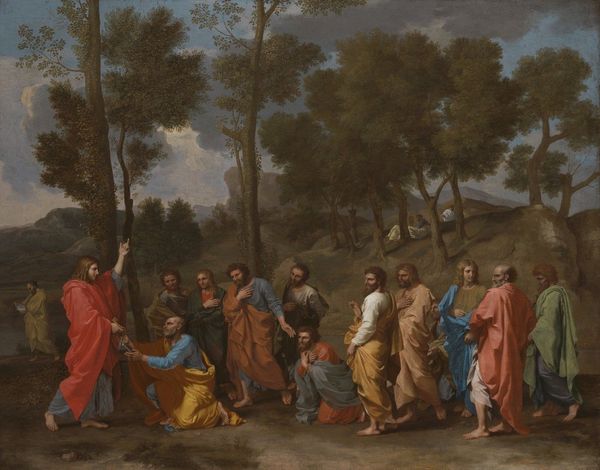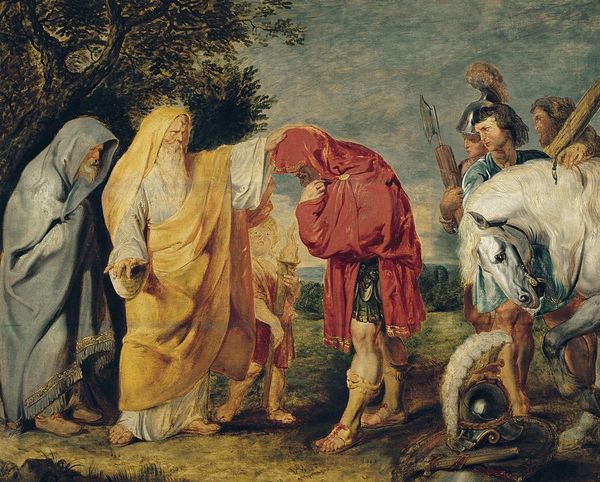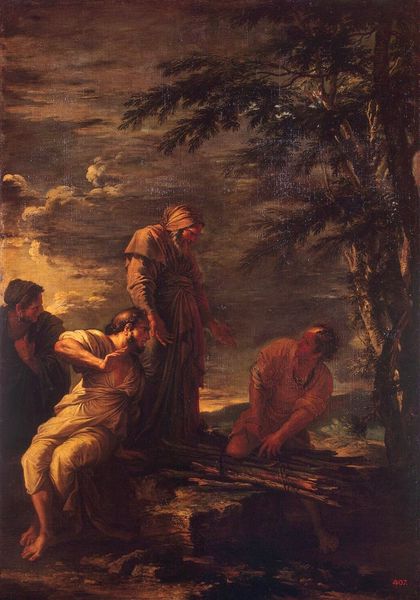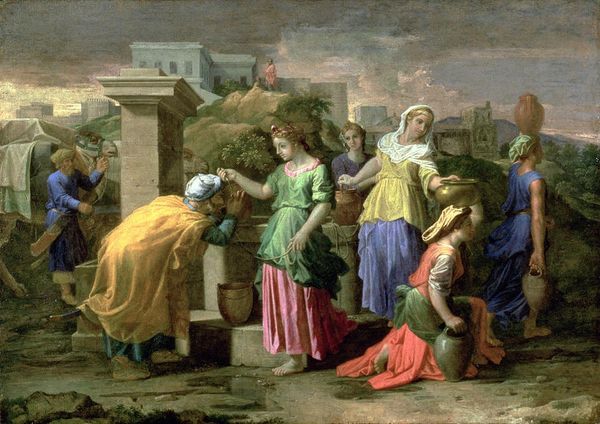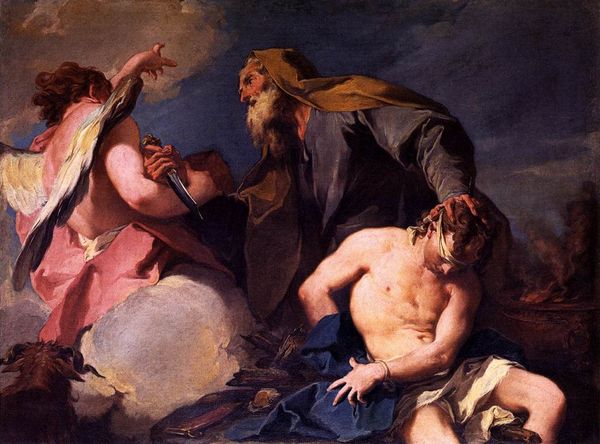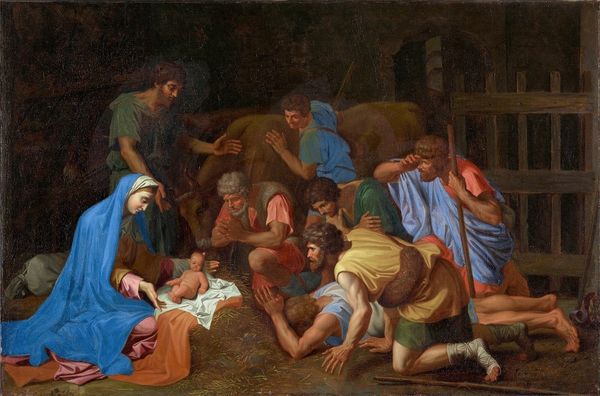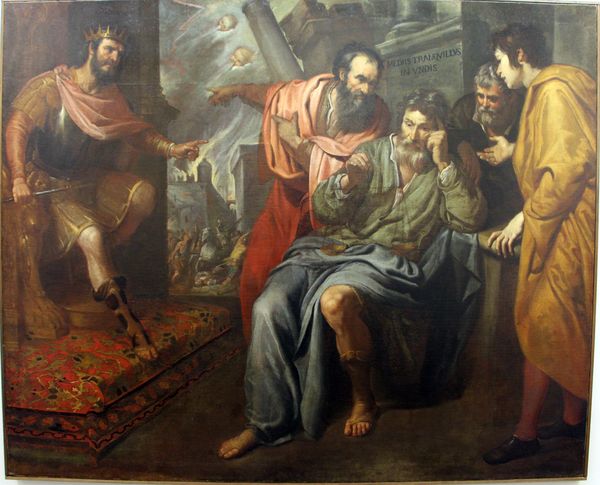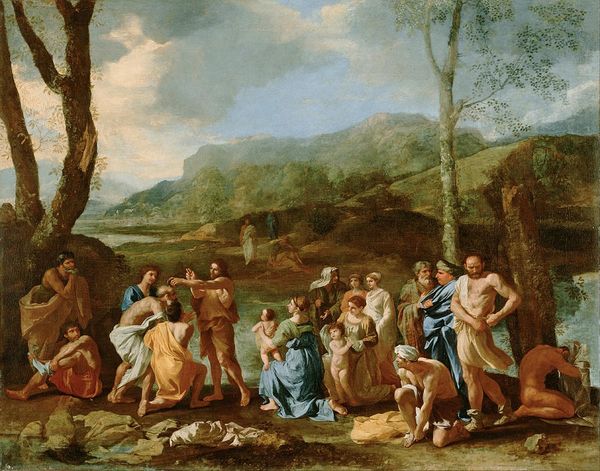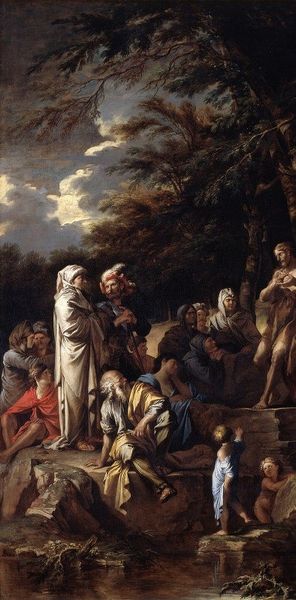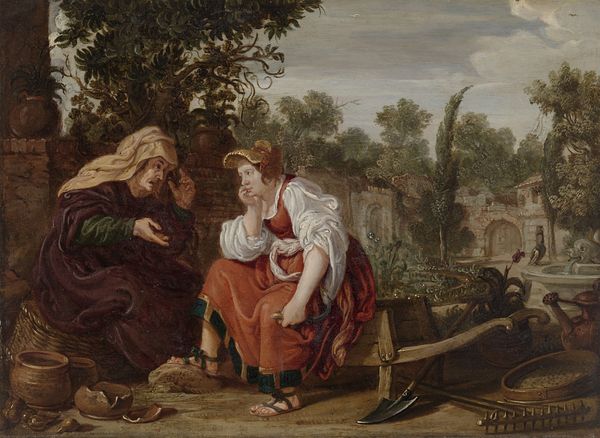
painting, oil-paint
#
portrait
#
narrative-art
#
baroque
#
painting
#
oil-paint
#
painted
#
figuration
#
christianity
#
mythology
#
history-painting
#
christ
Dimensions: 236 x 261 cm
Copyright: Public domain
Curator: Looking at this oil on canvas, "Abraham Receiving the Three Angels," painted around 1667 by Bartolomé Esteban Murillo, one can immediately sense a serene solemnity. Editor: That's interesting, "serene solemnity," it strikes me as deeply performative. Abraham is kneeling, arms outstretched, in an almost theatrical gesture of welcome and supplication before these three… well, divine figures. There’s a studied humility there that begs the question, is it genuine, or is it staged for a bigger power dynamic at play? Curator: I see your point about performance, absolutely. But consider the narrative it’s drawn from: Abraham, a man of advanced age, childless, receives these visitors who promise him he will father a great nation. I imagine his gesture embodies both faith and maybe even a touch of desperate hope. The Baroque style amplifies that drama, don’t you think? The figures are rendered so gracefully. Editor: Agreed, the Baroque influence is undeniable; Murillo’s employment of figuration is amazing. And within a religious framework where hospitality was, and arguably still is, seen as a sacred duty, Abraham’s welcome speaks volumes about societal expectations. Plus, look at the angels themselves – their youthful androgyny challenges typical gender representations within religious art. Curator: Yes! There's an ambiguity there, isn't there? It makes them seem both approachable and ethereal. Also, the setting... a modest home beneath a tree, grounds the divine in everyday life. It's a lovely contrast that Murillo handles so deftly. A truly inspired moment. Editor: Absolutely inspired. I find myself thinking about how art constantly challenges how we perceive the human form in our own stories, where divinity and humanity continually wrestle. These three figures subvert these long-held beliefs—offering a more expansive space for understanding humanity’s multifaceted relationship to the divine. It really causes one to question gender and identity dynamics. Curator: Yes, indeed. It seems Murillo asks us not just to witness this divine encounter, but to really contemplate our place within narratives of faith, gender and societal expectation, too. Editor: Murillo has really offered up many layers in this one, food for thought on humanity, religion and hospitality, who are we serving really?
Comments
No comments
Be the first to comment and join the conversation on the ultimate creative platform.
